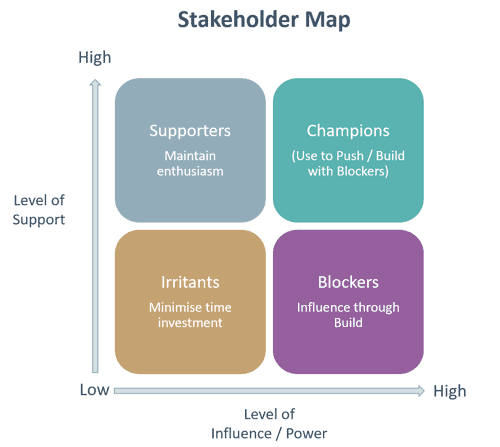
More and more of our organisations are becoming flatter, hierarchies are crumbling and matrixes are everywhere. The ability of a manager to give instructions and to quote Jean-Luc Picard from Star Trek “make it so, number one” is eroding as cultures shift and as millennials come to dominate the workforce. In this context, managers and individuals need highly developed influencing skills to navigate their way around the organisation and to bring their ideas into reality.
Many of us still like to believe that “a good idea will sell itself” but in our over-stimulated world that really is not the case. We need to engage actively with people, to gain their attention and interest and to find ways to get their support. As Robert-Louis Stevenson said, “Everybody lives by selling something” and, in the business world, managers sell ideas.
There is a modern reminder of this in the Change Acceleration Process at GE, part of the Six Sigma approach. The reminder is in the equation E = Q x A.
Effectiveness (of an idea/decision/vision) is equal to the quality (of an idea/concept/structure etc.) multiplied by the Acceptance (of the idea). Therefore, it is of little use to stay in your office perfecting your idea. In organisations, people are the key and Influencing skills are essential to gaining acceptance.
There are several key elements required for success in influencing. The first amongst these is identifying whom you need to convince. In most organisational influencing situations, there are several stakeholders with varying abilities to block an idea or to support it. In our busy lives, we may sometimes feel that, as long as we have our line manager’s support, then everything will go well and the idea will be adopted. Well, as we said earlier, your manager is also unlikely to have the power to simply “make it so”. Even if he/she has the power to impose your solution on the organisation, there is a probability that people may comply without any real commitment. The art and science of stakeholder mapping and management should not be underestimated. Often people with low organisation status have immense influence to sabotage your initiative.
When each stakeholder has been identified, then the next stage is to plot the players on a stakeholder map. There are several versions of stakeholder maps with differing axes, but the one that I find most useful plots “level of support” on the y-axis and “influence over change” on the x-axis. Now, the game is afoot. The challenge is to move the players so that the centre of gravity is in the top right quadrant of the map. This is playing politics in the positive sense of the word.
There are three possible ways to move people from low support to high support and they can be termed Push, Build or Delegate.
Push is a legitimate choice and the optimum choice where you have high power or high credibility in the subject area under discussion. Push often shows up as a confident presentation with a subsequent call for action. It is how much business, and commercial selling, happens and it can be the optimum choice when the circumstances support it. Misuse of Push occurs where you overestimate your power/credibility, where the situation is ambiguous or where the atmosphere is emotional. When you use a Push style, you need to be correct and able to logically defend your recommendations. People on the receiving end of Push are often provoked to Push back!
Build is the only choice when you lack the power/credibility to Push, or where the situation is ambiguous and the atmosphere is emotional. Build takes more time and involves more listening than talking. It takes skill in building rapport with other personality types and cultures, building trust, looking for mutual benefit and being creative about identifying win/win outcomes for you and the other party.
Delegate is a reminder that we do not have to take every stakeholder challenge yourself. You can use someone else with more power to Push for you. This is why we have senior management sponsors on our projects. You can also delegate a Build task to someone who already has trust and relationship with the target stakeholder.